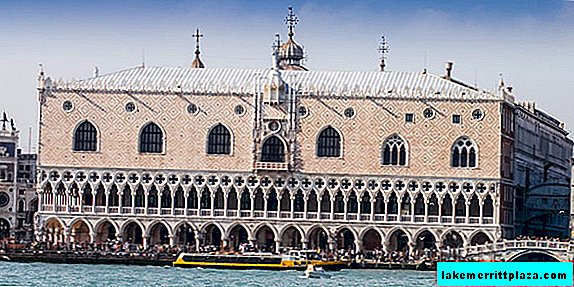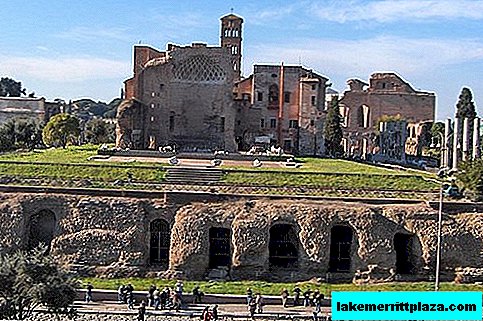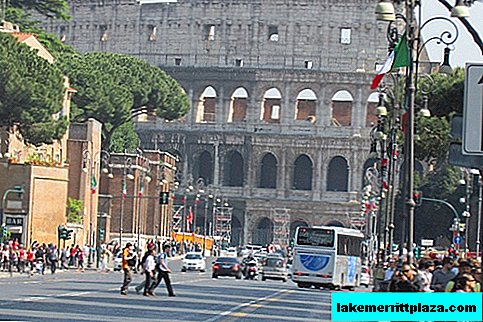Venice is famous for its unique canals that create a unique architectural ensemble. Travelers who decide to visit this city-museum should definitely see the Bridge of Sighs (Ponte dei Sospiri) - an amazing arched building in the Baroque style, built in the early 17th century.
Shrouded in mysterious legends and myths, he inspired many painters, poets and writers. Each year, this architectural monument with special magnetism attracts hundreds of thousands of tourists who want to see the legendary bridge with their own eyes and imbue the spirit of its tragic and exciting history.
Where is it and how to get inside
The Bridge of Sighs connects the former prison building and the Doge's Palace (Palazzo Ducale), and is located in the central part of Venice, on the Palace Canal.

It is located a few minutes walk from the main city square of St. Mark's (Piazza San Marco), you can see its appearance by heading to the Slavyanskaya embankment (two columns with statues will serve as a guide) towards the Straw Bridge (Ponte della Paglia). It is from this place that the best view of the landmark opens.
For those wishing to get inside the structure, we advise you to purchase a ticket online for 27 euros to visit the Doge's Palace Museum - this will avoid a 2-3 hour queue at the box office.

The excursion program offers to see the casemates and chambers of the rulers of Venice, walk along the Bridge of Sighs to the prison building and back, and also visit St. Mark's Cathedral without waiting in line. Group tours, starting at 56 euros, are conducted in English, German, Spanish, French and Italian.

Construction history
The bridge was built by order of the influential and wealthy politician, the head of the Republic of Venice, Marino Grimani. On the main facade of the building you can see the family coat of arms of his famous family.

The construction began in 1600 and ended in 1603, which for that time was considered a record time. Antonio Contino, a native of the famous dynasty of Italian architects, was engaged in the design and construction.
Buildings connecting the bridge
During the existence of the Venetian Republic, Doge's Palace was not only the residence of influential ruling persons. All important government bodies are concentrated here. Within the walls of the building gathered the Great Council (the main management institute), the Council of Ten (secret police), the Council of Three (inquisition), the Senate and the Supreme Court. The premises of the palace housed a large number of different departments involved in domestic and foreign policy.
No wonder that there was also a prison consisting of two zones: “piombi” and “pozzi”. Seven chambers of the first were located on the top floor, under the roof of the building, lined with lead plates (from Italian. Piombo - "lead"). Political criminals and prisoners held high positions in society were kept in isolation here. The "pozzi" prison cells were located on the lower floor of the building, at the water level of the Palace Canal (from Italian. Pozzo - "well"). The most dangerous criminals were placed here.
In the 16th century, when the cells for prisoners ceased to be enough, a new Carcheri prison was built opposite the Palace (from Italian carceri - “prison”), which became famous as one of the most severe in medieval Italy. The famous Italian architect Antonio da Ponte worked on the building project. An interesting fact is that Carchery continued to fulfill her primary functional purpose until the end of World War II. In the late 40s of the last century, it was closed. Now within its walls is a museum, which is visited with interest by guests of Venice.
Thus, the Bridge of Sighs was the last, short road of convicts from the courtroom, where the verdict was pronounced, to the prison with its tight and dark cameras, saturated with horror and despair, powerful bars, dampness, omnipresent rats, meager food and torture.
The photo below shows the view from the bridge to Venice, which was opened by the convict:

Architectural features
The Bridge of Sighs is an unusual structure with walls of snow-white limestone, a semicircular roof and small windows, which is largely determined by its purpose. The design is made in the Baroque style, popular for the 17th century, which is characterized by an abundance of small details. Powerful walls are gracefully decorated with arches of a classical form and pilasters imitating columns. On the windows - a fancy pattern in the form of carvings of white marble. All these decor elements create an extraordinary feeling of lightness and airiness.
In the center of the facade there is a bas-relief of Saint Apostle Mark, the patron saint of Venice, next to it is the figure of a lion with wings, the main symbol of the city on the water.
Inside the bridge looks gloomy and even sinister. The brickwork of heavy walls is devoid of any decoration. The room is divided into two narrow, parallel corridors leading to the prison and back.
- We recommend reading about: Venice's most beautiful bridges
Legends and myths
Like most of Venice's sights, the Bridge of Sighs is shrouded in mystical dowries and beliefs.
One of the legends is connected with the name of an extraordinary person: Giacomo Girolamo Casanova, who was destined to become a prisoner of casemates and walk across the bridge as a convict for serious crimes at that time. The famous heartthrob, writer, adventurer, alchemist and magician was arrested in 1755 on charges of heresy, spiritual practices, fraud and debauchery.
- Interesting fact: After spending more than a year in captivity, Casanova managed to break free, becoming the first and only prisoner to escape from the sinister walls of this harsh prison.

Despite the dark history, the Bridge of Sighs is also known as one of the most romantic places of magnificent Venice.
There is a funny legend according to which, a couple in love, who sailed and kissed under the bridge at midnight, never parted, forever retaining the sincerity and ardor of love.
Inspired by painters and writers
Over the centuries, the Bridge of Sighs has served as a source of inspiration for many great writers and artists. This monument of architecture got its present name thanks to Byron and his poem "Pilgrimage of Childe-Harold", written in the early 19th century. The English poet even spent the night in one of the cells of Carchery prison to absorb and eloquently convey the severity and bitterness of the thoughts of a person who was in a prisoner position.
The mention of the bridge is found by the American writer Edgar Allan Poe in the surreal story "Date", as well as in the works of Goethe, Stendhal, Chekhov and Akhmatova.
Famous artists of different eras sought to capture this amazing masterpiece of architectural thought on their canvases. The most famous is the work of Mikhail Alexandrovich Vrubel "Venice. Bridge of Sighs."

A small graphic drawing made in pencil and watercolor is recognized as one of the best poetic images of the city on the water, not only in Russian but also in world art.
Copies of the bridge
The combination of magnificent forms and functionality prompted many architects to create structures similar to the Venetian Bridge of Sighs. Its copies can be found in different parts of the world:
- New York
- Oxford
- Cambridge;
- Lima
- Moscow;
- St. Petersburg.
Contradictory, magnificent, unforgettable - all these epithets are born from the guests of Venice, who were lucky enough to see the Bridge of Sighs. In the list of attractions, he undoubtedly occupies a leading position.








